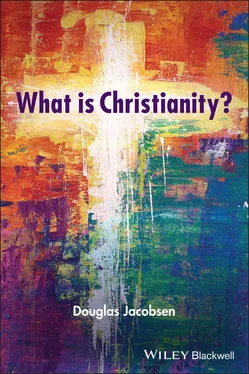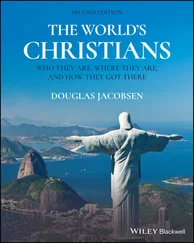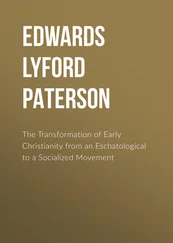The German state church was not impressed with Harnack’s views or erudition. Traditional German Christians thought his interpretation downplayed Christianity’s traditional emphasis on personal salvation and correct doctrine, and they initially tried to block his promotion to the University of Berlin when it was announced in 1888. Ultimately Kaiser Wilhelm II was forced to intervene personally to make sure Harnack got the job. Despite the church’s worries, Harnack himself was deeply committed to Christianity, and his lectures were crafted to provide university students with a positive view of Christianity that was fully compatible with modern learning. He hoped that university students would be so inspired by the message of Jesus that they would leave the university intent on making the German nation a place where “justice is done, no longer by the aid of force, but by free obedience to the good…not by legal regulations but by the ministry of love.” 1He wanted his students, and everyone else who heard or read his lectures, to become better Jesus-following Christians and more intelligent, caring citizens. That is how he envisioned Christianity: as the highest expression of religion itself, a faith focused on goodness and love, and the solution to all of humanity’s problems.
Except it wasn’t. Just a few years after delivering his lectures, Harnack’s own actions undercut his claims. During the early months of World War I, he was one of ninety-three German intellectuals who composed a document entitled “To the Civilized World,” which justified atrocities committed by the German army during its infamous Rape of Belgium. In this statement he and his professorial peers argued that anyone “inciting Mongolians [i.e., Asians] and negroes against the white race, ha[d] no right whatsoever to call themselves upholders of civilization.” 2Harnack may have thought Christianity was the best and most perfect religion for all people, times, and places, but it did not prevent him from rationalizing wanton violence against civilians and championing the cause of German racial supremacy.
Christianity has not been a wellspring of universal goodness for humankind. Christians have contributed much that is good to the world, but they have also done significant harm. They have believed Jesus’s message of love for all people, but have often failed to act in loving, or even decent, ways. And Christianity cannot serve as the sole arbiter of human religiosity. Different religions provide humankind with different visions of the world as it is and could be, they offer different pathways to and definitions of salvation, and they advocate different ideals and values. Christianity is a powerful and inspiring religion, but it is not the simple religion that Harnack described.
In contrast to Harnack’s idealistic portrayal, this book offers a more empirical examination of what Christians have believed, how they have acted, how they have organized themselves, how they have spread their message around the world, and what challenges they are facing today. There is no intention to either criticize or praise the movement; the only goal is fair and accurate description. That said, this book is more than a mere recital of facts and numbers quantifying Christianity from the outside. It also looks at Christianity from the inside, trying to explain Christianity’s spiritual appeal and why so many people around the globe have embraced it.
One obvious fact about Christianity is that it is a far different movement today than it was a century ago when Harnack gave his university lectures. In 1900, two-thirds of the world’s Christians still lived in Europe. Today, only a quarter of the world’s Christians reside in Europe and about 10 percent live in North America. The rest, two-thirds of all the Christians in the world, live in the Global South (Africa, Asia, and Latin America). The internal composition of Christianity has also been transformed. In 1900, three major Christian traditions (Eastern Orthodoxy, Roman Catholicism, and Protestantism) dominated the Christian movement. Now there are four major traditions. The addition is Pentecostalism, and this new tradition, which currently attracts one out of every five Christians globally, has dramatically altered the Christian landscape. 3Simultaneously, the terrain of global politics has been fundamentally reordered. In 1900, half the world’s people were ruled by European colonial governments. Today those former colonies are independent nations, and the Christians who live in them are fully independent of Western Christian control. Christianity is no longer a European religion with a periphery everywhere else; Christianity has become a postcolonial, global faith with many different centers.
This book describes Christianity in eight chapters. Chapter 1explains how the movement got started, and how within 500 years a small group of followers of Jesus grew into a religion that had a membership that spread across a massive region of the world, ranging from Ireland in the northwest to the southern tip of the Indian subcontinent. Chapter 1also traces how Christianity changed from a loosely structured and fluid movement into a religion comprised of separately organized and distinct Christian traditions. Today, Christianity is housed in four major traditions – Eastern Orthodoxy, Catholicism, Protestantism, and Pentecostalism – and these four traditions account for about 97 percent of all the Christians in the world. Chapters 2through 5explain each of these traditions in turn.
The remainder of the book deals with the characteristics of Christianity as a whole. Chapter 6describes Christianity’s recent expansion around the world and the changing attitudes of Christians in both the Global North (Europe and North America) and the Global South (Africa, Asia, Latin America, and Oceania). Chapter 7describes the dramatically different experiences of Christians around the world today. Some Christians are persecuted; others are persecutors. Some Christians are wealthy; many are poor. In some regions Christianity is growing; elsewhere it is in decline. Despite all of these differences, most Christians continue to see themselves as members of one religion. Chapter 8explores this sense of Christian connectedness, describing what most Christians hold in common while also reflecting on a variety of religious challenges that Christianity is currently facing as a global movement. The Conclusion returns to the main question of the book and argues that Christianity today is what it has been throughout its long history: a religion that is still in the process of forming and reforming itself in response to changing circumstances and in light of its memory of Jesus.
1 1Adolph Harnack, What Is Christianity? translated by Thomas Bailey Saunders (New York: Harper and Row, 1957), p. 112. Harnack’s lectures were originally published in German in 1900 under the title Das Wesen des Christentums, which could literally be translated as “The Essence of Christianity.” They were published in English in 1902 using the present title.
2 2Professors of Germany, “To the Civilized World,” The North American Review 210:756 (August 1919), pp. 284–287, https://www.jstor.org/stable/pdf/25122278.pdf?acceptTC=true(accessed September 8, 2020).
3 3The demographic information included in this book represents the author’s best estimates based on a variety of sources. The most complete and reliable source of information is the World Christian Database ( https://www.worldchristiandatabase.org) and it has been consulted frequently. The numbers used here are not, however, taken directly from the WCD. They have sometimes been adjusted based on other information (from, for example, the United Nations or different national census figures) and the reporting categories differ from those of the WCD. Numbers in this book have been consistently rounded off to reflect that they are indeed estimates and not actual headcounts of Christians in different traditions, nations, or regions of the world. The goal has been to include all people who self-identify as Christian wherever they may live and whatever they may believe.
Читать дальше












